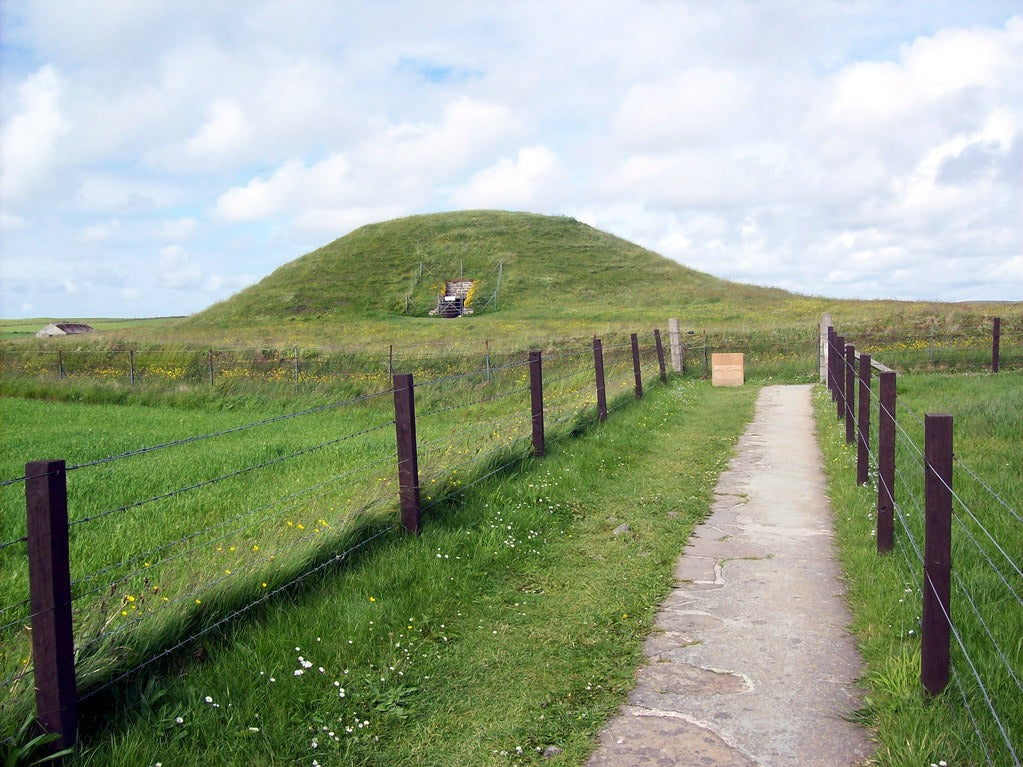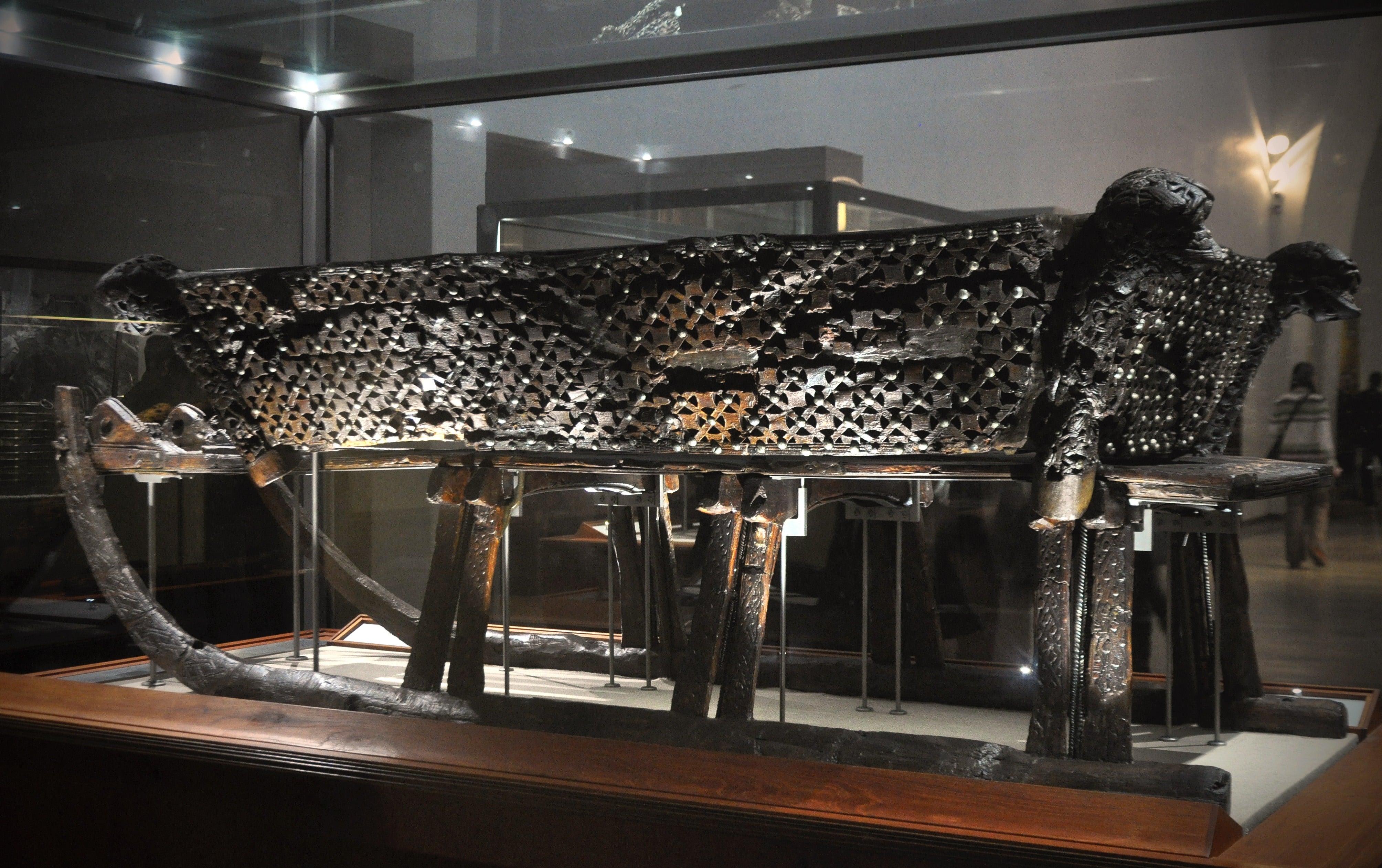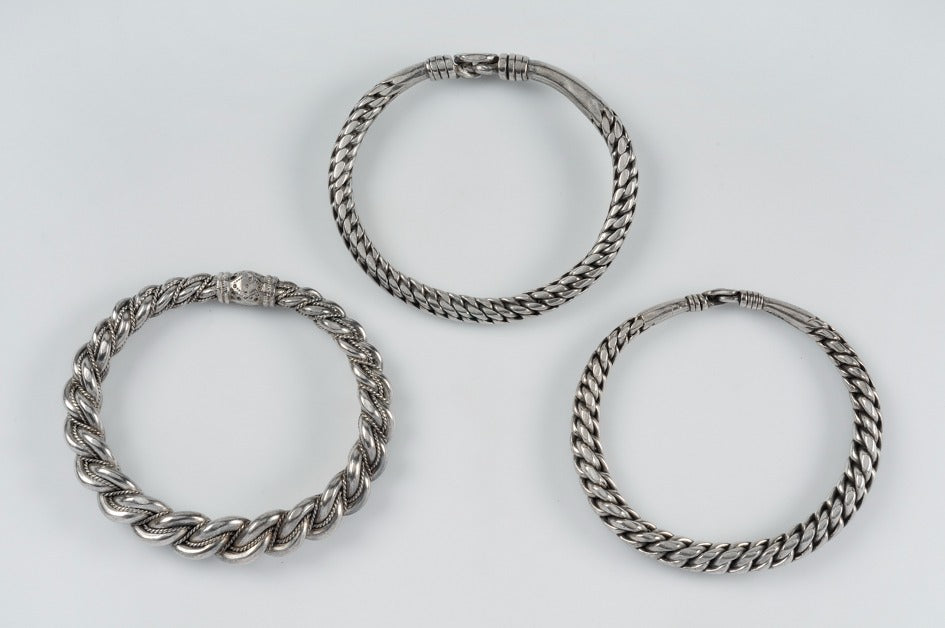
Orkney's Maeshowe: A Neolithic Wonder with Viking Graffiti
When the Vikings first broke into Maeshowe in the 12th century, little did they know they were adding another layer to a story that had begun millennia earlier. Today, we continue this tale of discovery, peeling back the layers of one of Orkney's most fascinating archaeological treasures.
The Origins of Maeshowe
Neolithic Wonders: Dating Maeshowe
The story of Maeshowe begins in the mists of prehistory, around 2800 BC. This was an era when the wheel was just being invented, and the great pyramids of Egypt were still centuries away from construction. Yet, on these remote Scottish islands, a community of farmers and hunters embarked on an architectural endeavor that would outlast empires.
The Masterminds Behind the Monument
Who were these ancient architects? While their names are lost to time, their legacy speaks volumes. These were not mere primitive cave-dwellers, but sophisticated planners with an intricate understanding of engineering and celestial movements. Imagine a people so in tune with their environment that they could align massive stone structures with the precision of modern-day satellites.
Architectural Marvel: The Structure of Maeshowe

Maeshowe's Entrance / Photo: Tbc2, Public Domain.
Entrance Passage: A Journey Through Time
As you approach Maeshowe, you're greeted by a low, unassuming mound. But don't be fooled by its humble exterior. The entrance passage, a narrow corridor stretching for 11 meters, is a masterpiece of prehistoric construction. Picture yourself crouching down, feeling the weight of millennia pressing upon you as you navigate this ancient threshold.
The Central Chamber: Heart of the Tomb
Emerging from the passage, you find yourself in a space that defies expectations. The central chamber, a perfect cube measuring about 4.5 meters on each side, soars to a height of 3.8 meters. It's a cathedral of stone, where the spirits of the dead were thought to reside.

Cross-sections of Maeshowe / Illustration: Fantoman400, CC BY-SA 3.0
Side Chambers: Secrets Within Secrets
Branching off from the main chamber are three smaller recesses, each a potential resting place for honored ancestors or precious grave goods. These side chambers add an air of mystery – what treasures or rituals might they have once held?
Astronomical Alignments: Maeshowe's Celestial Connections

Winter Solstice: A Spectacular Light Show
Perhaps the most awe-inspiring feature of Maeshowe is its alignment with the winter solstice. For a few precious minutes each year, as the sun sinks to its lowest point on the horizon, a beam of light penetrates the darkness of the passage, illuminating the inner chamber. It's a moment of pure magic, a connection between earth and sky that has endured for millennia.
Lunar Cycles and Maeshowe
But the sun isn't the only celestial body honored by Maeshowe's design. Recent studies suggest that the monument may also have alignments with lunar cycles. The ancient builders seem to have encoded the rhythms of the cosmos into their stone sanctuary.
Viking Intrusion: A New Chapter in Maeshowe's History

Old Norse runic inscriptions found in the otherwise Neolithic burial / Photo: McBey, CC BY 2.0
Norse Graffiti: Vandalism or Historical Treasure?
Fast forward to the 12th century CE, and Maeshowe found itself playing host to some unexpected visitors. Norse Vikings, perhaps seeking shelter from a winter storm, broke into the tomb. But rather than simply passing through, they left their mark – quite literally.
The walls of Maeshowe bear over 30 runic inscriptions, forming the largest single collection of such writings in the world outside Scandinavia. These carvings, far from being mere vandalism, offer us a fascinating glimpse into the minds and lives of these Norse adventurers.
One inscription boldly proclaims, "Haermund Hardaxe carved these runes," a timeless act of 'Kilroy was here' that echoes through the centuries. Another, more poetic carving reads, "These runes were carved by the man most skilled in runes in the western ocean," hinting at the pride and competition among Viking runemasters.
Some inscriptions are more mundane, yet no less intriguing. "Ingigerth is the most beautiful of all women" suggests a lovestruck Viking, immortalizing his affections in stone. Others speak of treasure: "Is to me said that treasure is here hidden very well," one reads, tantalizing modern archaeologists with the possibility of undiscovered riches.
Perhaps most intriguing are the inscriptions that hint at the Vikings' own sense of history and mystery surrounding Maeshowe. One carving states, "The Jorsalafarers broke into Orkahaugr," using an old Norse name for the tomb that translates to "Mound of the Orks." This suggests that even to the Vikings, Maeshowe was an ancient and possibly mythical place.
These runic messages, carved with care and skill, transform Maeshowe from a silent tomb into a living record of human presence. They add layers of history and humanity to the ancient stones, bridging the gap between the Neolithic builders and our modern era.
The Maeshowe Dragon: A Legendary Carving

The 'Maeshowe Dragon' / Photo: CC BY 2.0
Among the runic inscriptions left by the Vikings, one stands out: the famous Maeshowe Dragon. This serpentine creature, carved with skill and imagination, has become an icon of the site. Its sinuous form, with interlaced patterns typical of Norse art, sprawls across the stone, guarding the ancient chamber with its fearsome visage.
The dragon, possibly a representation of the Norse mythological creature Jörmungandr, the Midgard Serpent, showcases the artistic prowess of its creator. Its presence in Maeshowe may have been intended as a protective symbol, or perhaps it was carved to mark the Vikings' conquest of this ancient and mysterious place.
Whatever its original purpose, the Maeshowe Dragon serves as a powerful reminder of the meeting of cultures within these ancient walls. It stands as testament to the enduring human impulse to leave a mark, to say "I was here," even in the face of time's relentless march.
In this way, the Viking intrusion, far from desecrating Maeshowe, has added another rich layer to its long and complex history. These Norse adventurers, separated from the tomb's Neolithic builders by nearly four millennia, became unwitting contributors to Maeshowe's enduring legacy, their words and art now an integral part of this remarkable monument's story.
Maeshowe in Modern Times: Preservation and Tourism

Fiona Hyslop (Culture Secretary) and archaeologists meet at the Maeshowe burial, part of the Heart of Neolithic Orkney World Heritage Site / Photo: Scottish Government, CC BY-NC 2.0
UNESCO World Heritage Status
In 1999, Maeshowe, along with other prehistoric sites in Orkney, was granted UNESCO World Heritage status. This recognition underscores the global importance of the monument and ensures its protection for future generations.
Visiting Maeshowe: A Journey into Prehistory
Today, visitors from around the world come to experience Maeshowe firsthand. As you walk in the footsteps of Neolithic builders and Viking raiders, you can't help but feel a connection to the vast sweep of human history.
The Legacy of Maeshowe: Insights into Neolithic Culture

Ritual and Ceremony: Maeshowe's Purpose
While we may never know exactly how Maeshowe was used, it's clear that it played a central role in the spiritual life of its builders. Was it purely a tomb, or perhaps a place of ancestor worship? Maybe it served as an astronomical observatory or a site for seasonal rituals.
Artistic Expressions: Neolithic Craftsmanship
The construction of Maeshowe itself is a work of art, but it also contains more subtle artistic touches. From the precision of its stone-fitting to the possible painted designs that may have once adorned its walls, Maeshowe stands as a gallery of Neolithic aesthetics.
Conclusion
As we stand in the shadow of Maeshowe, we're reminded of the enduring human drive to create, to understand our place in the cosmos, and to leave a mark that outlasts our brief lives. This ancient tomb, with its perfect proportions and celestial alignments, continues to inspire and perplex us in equal measure.
Maeshowe is more than just a relic of the past; it's a bridge between worlds – between earth and sky, between life and death, between our modern reality and the mystical realm of our ancestors. As we continue to study and preserve this remarkable monument, we're not just protecting stones and earth, but safeguarding a key to understanding our own humanity.
In the end, Maeshowe remains an enigma, a stone puzzle set against the wild Orcadian sky. It challenges us to look beyond the surface, to consider the vast knowledge and spiritual depth of those who came before us. And perhaps, in unraveling its mysteries, we might just discover something profound about ourselves.
FAQs
- How old is Maeshowe?
Maeshowe is believed to have been constructed around 2800 BC, making it over 5,000 years old.
- Can visitors go inside Maeshowe?
Yes, guided tours allow visitors to enter Maeshowe, but access may be limited to preserve the site.
- What is the significance of the winter solstice at Maeshowe?
During the winter solstice, sunlight enters the entrance passage and illuminates the inner chamber, demonstrating the builders' astronomical knowledge.
- Who were the Vikings that left graffiti in Maeshowe?
The exact identities are unknown, but runic inscriptions suggest they were Norsemen who broke into the tomb in the 12th century CE.
- Is Maeshowe part of a larger archaeological complex?
Yes, Maeshowe is part of the Heart of Neolithic Orkney UNESCO World Heritage Site, which includes other significant prehistoric monuments.
References
Ritchie, A. (1995). Prehistoric Orkney. B.T. Batsford Ltd., London.
Richards, C. (1996). Monuments as Landscape: Creating the Centre of the World in Late Neolithic Orkney. World Archaeology, 28(2), 190-208.
Hedges, J.W. (1984). Tomb of the Eagles: Death and Life in a Stone Age Tribe. New Amsterdam Books, New York.
Bradley, R. (1998). The Significance of Monuments: On the Shaping of Human Experience in Neolithic and Bronze Age Europe. Routledge, London.
Renfrew, C. (1979). Investigations in Orkney. Society of Antiquaries of London, London.
"MAESHOWE BURIAL CHAMBER - ORKNEY" by summonedbyfells is licensed under CC BY 2.0.
"Winter Solstice sunset Silhouetting Trees in the Distance" by YellowstoneNPS is marked with Public Domain Mark 1.0.
"Neolithic writing, Maeshowe, Orkney Islands" by M McBey is licensed under CC BY 2.0.
"Maeshowe Dragon" by PunkToad is licensed under CC BY 2.0.
"Culture Secretary Fiona Hyslop meets archaeologists at Maeshowe Chambered Cairn, part of the Heart of Neolithic Orkney World Heritage Site." by Scottish Government is licensed under CC BY-NC 2.0.
"Maeshowe and Barnhouse Stone" by stevekeiretsu is licensed under CC BY-NC 2.0.








